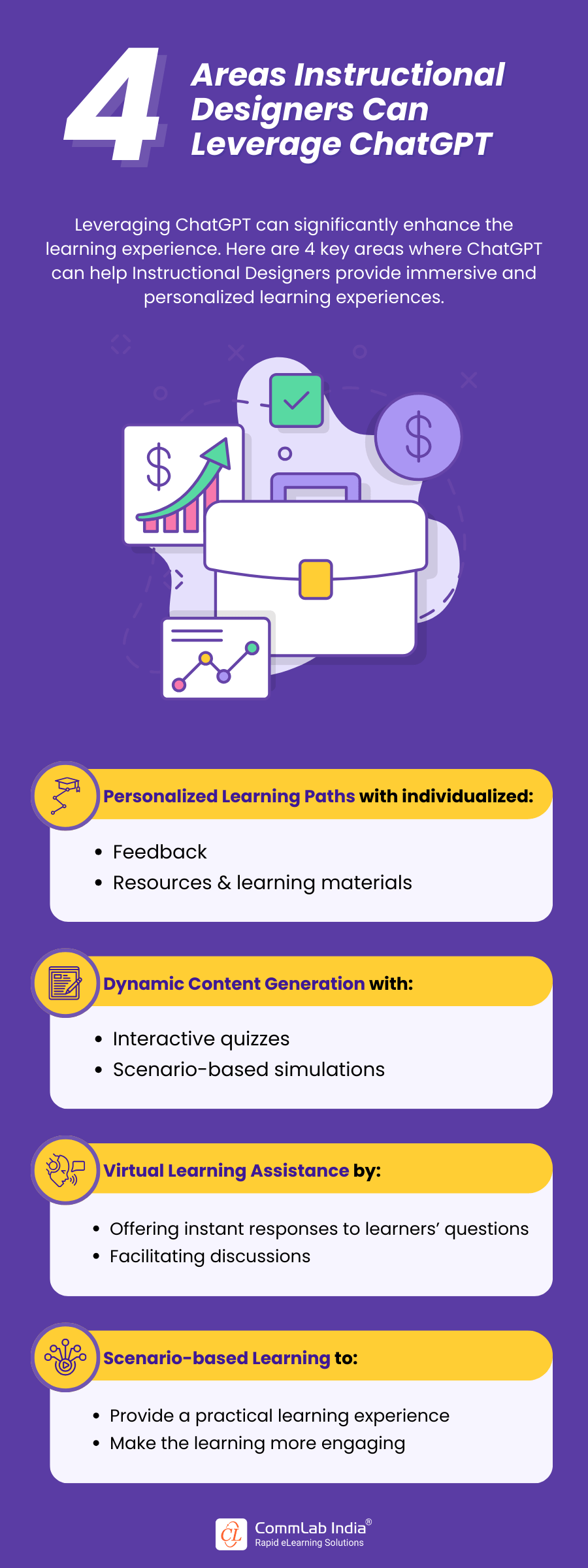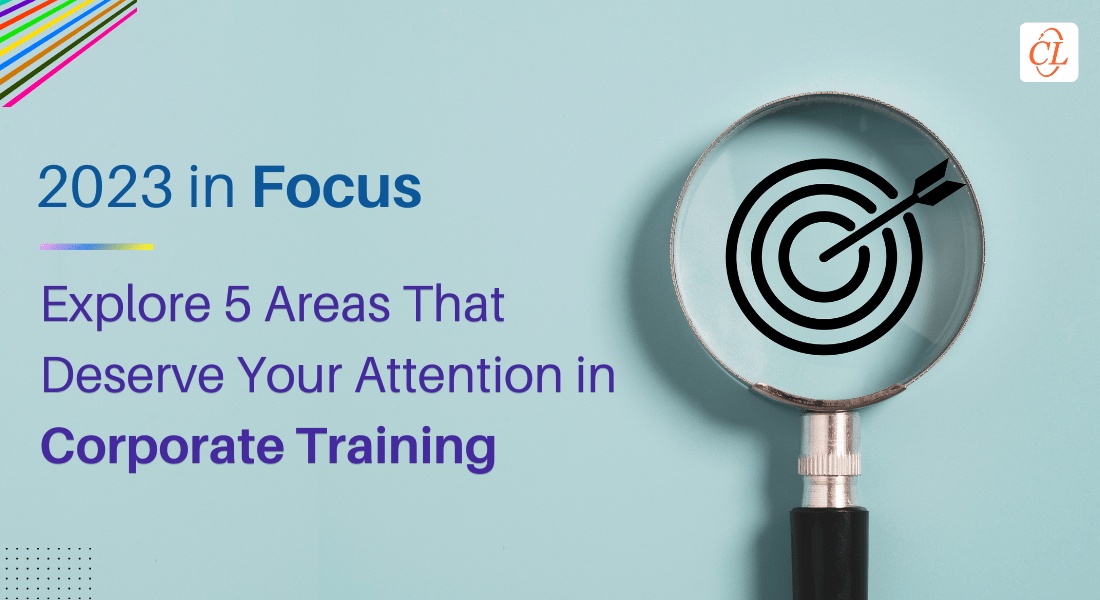Next-Gen eLearning: 6 Game-Changing Instructional Design Trends

ELearning has emerged to be the go-to corporate training format for successful organizations for quite some time now. Leading companies are reaping its manifold benefits and improving their business results. The connection between eLearning and instructional design is noteworthy. An awesome eLearning course stands on the bedrock of robust instructional design. With rapid advancements in the field of corporate L&D, instructional designers must keep ahead of the latest trends to design eLearning courses that garner attention, drive learner engagement, and achieve desired results.
If you are keen to learn what’s trending in the current scenario and what’s going to shape the future of workplace learning in the coming days, keep scrolling.
→ Download eBook: Corporate L&D Trends 2025 – Get the View from the Trenches
Table Of Content
- Personalization
- Microlearning
- Immersive Learning
- AI in Instructional Design
- Accessible Learning
- Data-Driven Instructional Design
Key Instructional Design Trends for 2025 and Beyond
1. Personalization: Meeting the Needs of Individual Learners
In the coming years, personalized learning, which is already a huge thing, is set to revolutionize corporate training. Imagine a scenario where an employee, let's call her Sarah, embarks on a training program. With personalized learning, the system assesses her learning style, be it visual, auditory, or kinesthetic, and her prior knowledge. It takes into account her preferences, understanding that she's more focused in the morning. As Sarah progresses, the system tracks her performance data and identifies areas where she excels and those that require more attention.
The benefits of such personalization are clear:
1. Maximized Engagement: Sarah remains fully engaged throughout her training journey because the content caters to her specific learning style and preferences. This keeps her motivated and eager to learn.
2. Enhanced Knowledge Retention: With content tailored to her individual needs, Sarah retains knowledge more effectively. Personalized learning ensures that she doesn't just memorize material but truly comprehends and internalizes it.
3. Skill Development: As Sarah's progress is closely monitored and adapted to her performance data, the training program continually challenges her in areas where she's strong and provides additional support in her areas of weakness. This approach leads to well-rounded skill development.
Embracing personalization in corporate training offers these distinct advantages, making it an essential component of the learning landscape in the years to come.
Discover how personalized eLearning tailors learning to the unique needs of learners, making the learning journey more effective and engaging!
2. Microlearning: Encouraging Bite-Sized Learning and Skill Building
Microlearning solutions is the latest buzz in the corporate L&D arena and is extremely popular among modern learners. Bite-sized microlearning modules are an effective way to train the modern workforce, irrespective of age, gender, and designation. Microlearning allows you the flexibility to choose from multiple learning formats. You can design microlearning assets in the form of videos, infographics, interactive PDFs, eBooks, podcasts, digital flashcards, and more to craft a perfect learning journey for your learners.

These micro power-packed learning nuggets are focused on delivering a single learning objective and are comprehensive. These short modules are easy to consume and ensure retention of knowledge in eLearning as they do not overwhelm learners with cognitive overload. They are extremely handy in the moment of need and make learning a part of the workflow. Learners can access microlearning lessons at their convenience and on their devices of choice.
Imagine a scenario where a company wants to train its sales team. Instead of long, overwhelming sessions, they offer short, engaging lessons. For instance, one day, the team learns about cold-calling, and the next, they tackle objection handling.
3. Immersive Learning: Virtual Reality (VR) and Augmented Reality (AR)
VR and AR technologies will play a significant role in shaping the future of corporate training. Imagine a global organization planning to train its customer service representatives. Traditionally, they'd rely on role-play sessions that, although valuable, often had limitations.
Now, with VR and AR, the training is transformed. Representatives wear VR headsets that immerse them in lifelike customer scenarios. They can interact with virtual customers, navigate real-world challenges, and practice their skills in a risk-free environment. AR overlays data on their physical surroundings, helping them make informed decisions and address customer issues effectively.
This approach revolutionizes corporate training by offering an experience that's informative and also truly interactive and engaging. Learners can practice their skills, make decisions, and learn from their mistakes within these immersive environments, ultimately enhancing their performance when they step into the real world.
Discover how AR and VR can transform your eLearning experience with these 5 powerful strategies!
4. AI in Instructional Design: Enhancing eLearning Courses
AI-enhanced Instructional Design streamlines eLearning course creation and enhancing the learning experience. AI-powered tools enable instructional designers to create effective and impactful eLearning courses.
AI also simplifies time-intensive tasks for instructional designers, such as automating content curation, generating eLearning assessments, and analyzing learner performance data. Features like adaptive learning use AI to adjust content delivery in real-time, ensuring that learners receive the right materials at the right time.
Additionally, AI-driven insights are helping instructional designers make data-informed decisions, improving course relevance and effectiveness. By integrating AI into eLearning, organizations can create dynamic, efficient courses that cater to diverse learning styles and drive better outcomes.
The integration of cutting-edge AI tools has brought about significant advancements, and among these, ChatGPT emerges as a standout tool and an invaluable partner for instructional designers.
Have a look at this infographic to learn more!
5. Accessible Learning: Fostering Inclusion and Equal Opportunities
Accessible eLearning is on the rise focusing on creating inclusive learning experiences for all learners. This approach ensures that content is designed to meet diverse needs, including those with disabilities or varying learning preferences. By incorporating features such as closed captions, screen reader compatibility, adjustable font sizes, and alternative text for images, instructional designers can break down barriers to education. Additionally, the use of Universal Design (UD) principles supports equal opportunities by offering multiple ways to engage learners, present information, and assess understanding. As organizations and institutions prioritize accessibility, eLearning continues to evolve into a more inclusive space where everyone, regardless of their abilities, can thrive.

Corporate L&D Trends 2025
Get the View from the Trenches
- Win with AI
- Design for the agile workforce
- Unlock scale, volume, quality
- Make an impact
- Much more
6. Data-Driven Instructional Design: Leveraging Analytics for Continuous Improvement
In the rapidly evolving world of eLearning, data analytics has become an indispensable tool for creating impactful learning experiences. Instructional designers can harness the power of data to make informed decisions about instructional design, ensuring that eLearning programs are not only effective but also tailored to meet the diverse needs of learners. By analyzing key metrics such as learner performance, engagement levels, completion rates, and feedback, organizations can identify strengths and pinpoint areas requiring improvement within their eLearning courses.
Data-driven insights allow organizations to go beyond one-size-fits-all training that cater to individual learner needs, preferences, and skill levels. For example, adaptive learning systems can use analytics to dynamically adjust content delivery, ensuring that learners are neither overwhelmed nor underwhelmed. Additionally, by tracking progress in real-time, organizations can quickly identify learners who may be struggling and offer timely interventions to keep them on track.

Measuring eLearning effectiveness also becomes more precise with data. Organizations can assess whether specific modules or activities are achieving their intended learning outcomes and adjust accordingly. This iterative approach fosters continuous improvement, ensuring that training programs remain relevant, engaging, and aligned with organizational goals.
In a competitive landscape where employee skills and knowledge are critical for success, leveraging data analytics in eLearning is no longer optional—it’s essential. By integrating data into instructional design, organizations can deliver more effective, engaging, and personalized learning experiences that drive both individual and organizational growth.
Wrapping Up
The future of eLearning for corporate training is exciting and holds immense potential for organizational growth. As we move towards 2025, it is essential for instructional designers to stay ahead of the curve and adapt to these trends in order to create impactful and engaging eLearning experiences for their corporate training initiatives.
Ready to stay ahead of the curve? Dive into our eBook and explore winning corporate L&D trends and how these trends can transform your employee training programs and drive organizational success.








